Psychology Classics On Amazon

Identification As a Process of Incidental Learning
Image courtesy of Helgi Halldórsson via flickr (CC BY-SA 2.0)
Early research article by Albert Bandura on the behavior theory concept known as vicarious learning, observational learning and role taking. This landmark paper was instrumental in leading Bandura to conduct one of the most famous psychology studies of all time, "Transmission of Aggression Through Imitation of Aggressive Models." More commonly known as "The Bobo Doll Experiment!"
Become A Psychology Patron
If you like this website please support my Patreon page so that I can continue to create free content and resources for psychology students and educators; like making this classic psychology article freely available.
Want To Study Psychology?
The Article in Full
Although part of a child's socialization takes place through direct training, much of a child's behavior repertoire is believed to be acquired through identification with the important adults in his life. This process, variously described in behavior theory as "vicarious" learning (Logan, Olmsted, Rosner, Schwartz, & Stevens, 1955), observational learning (Maccoby & Wilson, 1957; Warden, Fjeld, & Koch, 1940), and role taking (Maccoby, 1959; Sears, Maccoby, & Levin, 1957) appears to be more a result of active imitation by the child of attitudes and patterns of behavior that the parents have never directly attempted to teach than of direct reward and punishment of instrumental responses.
While elaborate developmental theories have been proposed to explain this phenomenon, the process subsumed under the term "identification" may be accounted for in terms of incidental learning, that is, learning that apparently takes place in the absence of an induced set or intent to learn the specific behaviors or activities in question (McGeoch & Won, 1952).
During the parents' social training of a child, the range of cues employed by a child is likely to include both those that the parents consider immediately relevant and other cues of parental behavior which the child has had ample opportunities to observe and to learn even though he has not been instructed to do so. Thus, for example, when a parent punishes a child physically for having aggressed toward peers, the intended outcome of the training is that the child should refrain from hitting others. Concurrent with the intentional learning, however, a certain amount of incidental learning may be expected to occur through imitation, since the child is provided, in the form of the parent's behavior, with an example of how to aggress toward others, and this incidental learning may guide the child's behavior in later social interactions.
The use of incidental cues by both human and animal subjects while performing nonimitative learning tasks is well documented by research (Easterbrook, 1959). In addition, studies of imitation and learning of incidental cues by Church (1957) and Wilson (1958) have demonstrated that subjects learn certain incidental environmental cues while imitating the discrimination behavior of a model and that the incidental learning guides the subjects' discrimination responses in the absence of the model. The purpose of the experiment reported in this paper is to demonstrate that subjects imitate not only discrimination responses but also other behaviors performed by the model.
|
The incidental learning paradigm was employed in the present study with an important change in procedure in order to create a situation similar to that encountered in learning through identification. Subjects performed an orienting task but, unlike most incidental learning studies, the experimenter performed the diverting task as well and the extent to which the subjects patterned their behavior after that of the experimenter-model was measured. |
Find A Psychology School Near You
|
The main hypothesis tested is that nursery school children, while learning a two-choice discrimination problem, also learn to imitate certain of the experimenter's behaviors which are totally irrelevant to the successful performance of the orienting task. One may expect, on the basis of theories of identification (Bronfenbrenner, 1960), that the presence of affection and nurturance in the adult-child interaction promotes incidental imitative learning, a view to which empirical studies of the correlates of strong and weak identification lend some indirect support. Boys whose fathers are highly rewarding and affectionate have been found to adopt the father-role in doll play activities (Sears, 1953), to show father-son similarity in response to items on a personality questionnaire (Payne & Mussen, 1956), and to display masculine behaviors (Mussen & Distler, 1959, 1960) to a greater extent than boys whose fathers are relatively cold and unrewarding.
One interpretation of the relationship between nurturance and identification is that affectional rewards increase the secondary reinforcing properties of the model and, thus, predispose the imitator to reproduce the behavior of the model for the satisfaction these cues provide (Mowrer, 1950). Once the parental characteristics have acquired such reward value for the child, conditional withdrawal of positive reinforcers is believed to create additional instigation for the child to perform behaviors resembling that of the parent model, i.e., if the child can reproduce the parent's rewarding behavior he can, thus, reward himself (Sears, 1957; Whiting & Child, 1953). In line with this theory of identification in terms of secondary reward, it is predicted that children who experience a warm, rewarding interaction with the experimenter-model should reproduce significantly more of the behaviors performed by the model than do children who experience a relatively distant and cold relationship.
METHOD
Subjects
The subjects were 24 boys and 24 girls enrolled in the Stanford University Nursery School. They ranged in age from 45 to 61 months, with a mean age of S3 months. The junior author played the role of the model for all 48 children, and two other female experimenters shared in the task of conducting the study.
General Procedure
Forty subjects were matched individually on the basis of sex and ratings of dependency behavior, and subdivided randomly in terms of a nurturant-nonnurturant condition yielding two experimental groups of 20 subjects each. A small control group comprising 8 subjects was also studied. In the first phase of the experiment half the experimental and control subjects experienced two nurturant rewarding play sessions with the model while the remaining subjects experienced a cold nonnurturant relationship. For the second phase of the experiment subjests performed a diverting two-choice discrimination problem with the model who exhibited fairly explicit, although functionless, behavior during the discrimination trials, and the extent to which the subjects reproduced the model's behavior was measured. The experimental and control procedures differed only in the patterns of behavior displayed by the model.
Matching Variable
Dependency was selected as a matching variable since, on the basis of the theories of identification, dependency would be expected to facilitate imitative learning. There is some evidence, for example, that dependent subjects are strongly oriented toward gaining social rewards in the form of attention and approval (Cairns, 1959; Endsley & Hartup, 1960), and one means of obtaining these rewards is to imitate the behavior of others (Sears, Maccoby, & Levin, 1957). Moreover, such children do not have the habit of responding independently; consequently they are apt to be more dependent on, and therefore more attentive to, the cues produced by the behavior of others (Jackubczak & Walters, 1959; Kagan & Mussen, 1956).
Measures of subjects' dependency behavior were obtained through observations of their social interactions in the nursery school. The observers recorded subjects' behavior using a combined time-sampling and behaviorunit observation method. Each child was observed for 12 10-minute observation sessions distributed over a period of approximately 10 weeks; each observation session was divided into 30-second intervals, thus, yielding a total of 240 behavior units.
The children were observed in a predetermined order that was varied randomly to insure that each child would be seen under approximately comparable conditions. In order to provide an estimate of reliability of the ratings, 234 observation sessions (4,680 behavior units) were recorded simultaneously but independently by both observers.
The subjects' emotional dependency was assessed in terms of the frequency of behaviors that were aimed at securing a nurturant response from others. The following four specific categories of dependency behavior were scored: seeking help and assistance, seeking praise and approval, seeking physical contact, and seeking proximity and company of others.
The dependency scores were obtained by summing the observations made of these five different types of behaviors and, on the basis of these scores, the subjects were paired and assigned at random to the two experimental conditions.
Experimental Conditions
In the nonnurturant condition, the model brought the subject to the experimental room and after instructing the child to play with the toys that were spread on the floor, busied herself with paper work at a desk in the far corner of the room. During this period the model avoided any interaction with the child.
In contrast, during the nurturant sessions the model sat on the floor close to the subject. She responded readily to the child's bids for help and attention, and in other ways fostered a consistently warm, and rewarding interaction.
These experimental social interactions, which preceded the imitation learning, consisted of two 15-minute sessions separated by an interval of approximately S days.
Diverting Task
A two-choice discrimination problem, similar to the one employed by Miller and Dollard (1941) in experiments of matching behavior, was used as the diverting task which occupied the subjects' attention while at the same time permitting opportunities for the subjects to observe behavior performed by the model in the absence of any instructions to observe or to reproduce the responses resembling that of the model.
The apparatus consisted of two small boxes, identical in color (red sides, yellow lid) and size (6" X 8" X 10"). The hinged lid of each box was lined with rubber stripping so as to eliminate any auditory cues during the placement of the rewards which consisted of small multicolor pictures of animals and flowers. The boxes were placed on small chairs approximately 5 feet apart and 8 feet from the starting point.
At the end of the second social interaction session the experimenter entered the room with the test apparatus and instructed the model and the subject that they were going to play a game in which the experimenter would hide a picture sticker in one of the boxes and that the object of the game was to guess which box contained the sticker.
The model and the subject then left the room and after the experimenter placed two stickers in the designated box, they were recalled to the starting point in the experimental room and the model was asked to take the first turn. During the model's trial, the subject remained at the starting point where he could observe the model's behavior.
Although initially it was planned to follow the procedure used by Miller and Dollard (1941) in which one of two boxes was loaded with two rewards and the child made his choice immediately following the leader's trial, this procedure had to be modified when it became evident during pretesting that approximately 40% of the subjects invariably chose the opposite box from the model even though the nonimitative response was consistently unrewarded. McDavid (1959), in a recent study of imitative behavior in preschool children, encountered similar difficulties in that 44% of his subjects did not learn to imitate the leader even though the subjects were not informed as to whether the leader was or was not rewarded.
In order to overcome this stereotyped nonimitation, the experimenter placed two rewards in a single box, but following the model's trial the model and the subject left the room and were recalled almost immediately (the intratrial interval was approximately 5 seconds), thus, creating the impression that the boxes were reloaded. After the subject completed his trial, the model and the subject left the room. The experimenter recorded the subject's behavior and reloaded the boxes for the second trial. The noncorrection method was used throughout. This procedure was continued until the subject met the learning criterion of four successive imitative discrimination responses, or until 30 acquisition trials had been completed. The slight modification in procedure proved to be effective as evidenced by the fact that only 9 of the 48 children failed to meet the criterion.
In order to eliminate any position habit, the rightleft placements of the reward were varied from trial to trial in a fixed irregular order. This sequence was randomly determined except for the limitation that no more than two successive rewards could occur in the same position.
The number of trials to criterion was the measure of the subjects' imitation behavior on the discrimination task.
Although the establishment of imitative choice responses was, in itself, of some theoretical interest, the discrimination problem was intended primarily as an orienting or distraction task. Thus, on each discrimination trial, the model exhibited certain verbal, motor, and aggressive behaviors which were totally irrelevant to the performance of the task to which the subject's attention was directed. At the starting point, for example, the model remarked, "Here I go," and then marched slowly toward the box containing the stickers repeating, "March, march, march." On the lid of each box was a small rubber doll which the model knocked off aggressively when she reached the designated box. She then paused briefly, remarked, "Open the box," removed one sticker and pasted it on a pastoral scene that hung on the wall immediately behind the boxes. The model terminated the trial by replacing the doll on the lid of the container. The model and the subject then left the room briefly. After being recalled to the experimental room the subject took his turn, and the number of the model's behaviors reproduced by the subject was recorded.
Control Group
In addition to the two experimental groups, a control group, consisting of eight subjects, comparable to the experimental groups in terms of sex distribution, dependency ratings, and nurturant-nonnurturant experiences was studied. Since the model performed highly novel patterns of responses unlikely to occur independently of the observation of the behavior of the model, it was decided to assign most of the available subjects to the experimental groups and only a small number of subjects to the control group.
The reasons for the inclusion of a control group were twofold. On the one hand, it provided a check on whether the subjects' behavior reflected genuine imitative learning or merely the chance occurrence of behaviors high in the subjects' response hierarchies. Second, it was of interest to determine whether the subjects would adopt certain aspects of the model's behavior that involved considerable delay in reward. With the controls, therefore, the model walked to the box, choosing a highly circuitous route along the sides of the experimental room; instead of aggressing toward the doll, the model lifted it gently off the container and she left the doll on the floor at the completion of a trial. While walking to the boxes the model repeated, "Walk, walk, walk."
Imitation Scores
On each trial the subjects' performances were scored in terms of the following imitation response categories:
selects box chosen by the model; marches; repeats the phrases, "Here I go," "March, march," "Open box," or "Walk, walk"; aggresses toward the doll; replaces doll on box; imitates the circuitous route to the box.
Some subjects made a verbal response in the appropriate context (for example, at the starting point, on the way to the box, before raising the lid of the container) but did not repeat the model's exact words. These verbal responses were also scored and interpreted as partially imitative behavior.
In order to provide an estimate of the reliability of the experimenter's scoring the performances of 19 subjects were scored independently by two judges who alternated in observing the experimental sessions through a one-way mirror from an adjoining observation room.
RESULTS
Reliability of Observations of Dependency Behavior
The reliability of the observers' behavior ratings was estimated by means of an index of agreement based on the ratio of twice the number of agreements over the combined ratings of the two observers multiplied by 100. Since small time discrepancies, due to inevitable slight asynchronism of the observers' timing devices, were expected, a time discrepancy in rating a given behavior category greater than two 30-second intervals was interpreted as a disagreement.
The interobserver reliabilities for the dependency categories considered separately were as follows: Positive attention seeking, 84%; help seeking, 72%; seeking physical contact, 84%; and seeking proximity, 75%.
Reliability of Imitation Scores
The percentage of agreement in scoring imitative behavior in the experimental sessions is presented in Table 1. Except for other imitative responses, the subjects' behavior was scored with high reliability and, even in the letter response category the scoring discrepancies arose primarily from the experimenter's lack of opportunity to observe some of the behaviors in question rather than from differences of interpretation, for example when the subject made appropriate mouth movements but emitted no sound while marching toward the containers, this partial imitation of the model's verbalizations could not be readily observed by the experimenter (who was at the starting point) but was clearly evident to the rater in the observation room.
Incidental Initiation of Model's Behavior
Since the data disclosed no significant sex differences, the imitation scores for the male and female subgroups were combined in the statistical analyses. Ninety percent of the subjects in the experimental groups adopted the model's aggressive behavior, 45 % imitated the marching, and 28% reproduced the model's verbalizations. In contrast, none of the control subjects behaved aggressively, marched or verbalized, while 75 % of the controls and none of the experimental subjects imitated the circuitous route to the containers. Except for replacing the doll on the box, which was performed by most of the experimental and control subjects, there was no overlap in the imitative behavior displayed by the two groups (see Table 2).
While the control subjects replaced the doll on the box slightly more often than the subjects in the experimental group, this difference tested by means of the median test was not statistically significant (x2 = 1.49; df = 1). Evidently the response of replacing things, undoubtedly overtrained by parents, is so well established that it occurs independently of the behavior of the model. Since this was clearly a nonimitative response, it was not included in the subsequent analyses.
To the extent that behavior of the sort evoked in this study may be considered an elementary prototype of identification, the results presented in Table 2 add support to the interpretation of identification as a process of incidental imitative learning.
Effects of Nurturance on Imitation
In order to make comparable the imitation scores for the subjects who varied somewhat in the number of trials to criterion, the total imitative responses in a given response category were divided by the number of trials. Since only a small number of subjects in the nonnurturant condition displayed imitative nonaggressive behavior and the distributions of scores were markedly skewed, the sign test was used to estimate the significance of differences between the two experimental groups.
The predicted facilitating effect of social rewards on imitation was essentially confirmed (see Table 3). Subjects who experienced the rewarding interaction with the model marched and verbalized imitatively, and reproduced other responses resembling that of the model to a greater extent than did the subjects who experienced the relatively cold and distant relationship. Aggression, interestingly, was readily imitated by subjects regardless of the quality of the model-child relationship.
Imitation of Discrimination Responses
A three-way analysis of variance (McNemar, 1955, Case XVII) of the trials scores failed to show any significant effects of nurturance or sex of imitator on the imitation of discrimination responses (see Table 4), nor did the two groups or experimental subjects differ significantly in the number of trials in which they imitated the model's choice or in the number of trials to the first imitative discrimination response.
While nurturance did not seem to influence the actual choices the subjects made, it nevertheless affected their predecision behavior. A number of the children displayed considerable conflictful vacillation, often running back and forth between the boxes, prior to making their choice. In the analysis of these data, the vacillation scores were divided by the total number of trials, and the significance of the differences was estimated by means of the sign test since the distribution of scores was markedly skewed. The results of this test revealed that the subjects in the nurturant condition exhibited more conflictful behavior than subjects in the nonnurturant group (p = .03). This finding is particularly noteworthy considering that one has to counteract a strong nonimitation bias in getting preschool children to follow a leader in a two-choice discrimination problem as evidenced by McDavid's (1959) findings as well as those of the present study (i.e., 75% of the subjects made nonimitative choices on the first trial).
Dependency and Imitation
Correlations between the ratings of dependency behavior and the measures of imitation were calculated separately for the nurturant and nonnurturant experimental subgroups, and where the correlation coefficients did not differ significantly the data were combined. The expected positive relationship between dependency and imitation was only partially supported. High dependent subjects expressed more partially imitative verbal behavior (rt = .60; p < .05) and exhibited more predecision conflict on the discrimination task (r = .26; p = .05) than did subjects who were rated low on dependency.
Dependency and total imitation of nonaggressive responses was positively related for boys (rt = .31) but negatively correlated for girls (rt = — .46). These correlations, however, are not statistically significant. Nor was there any significant relationship between dependency and imitation of aggression (r = .20) or discrimination responses (r = — .03).
DISCUSSION
The results of this study generally substantiate the hypotheses that children display a good deal of social learning of an incidental imitative sort, and that nurturance is one condition facilitating such imitative learning.
The extent to which the model's behavior had come to influence and control the behavior of subjects is well illustrated by their marching, and by their choice of the circuitous route to the containers. Evidence from the pretesting and from the subjects' behavior during the early discrimination trials revealed that dashing toward the boxes was the dominant response, and that the delay produced by marching or by taking an indirect route that more than doubled the distance to the boxes was clearly incompatible with the subjects' eagerness to get to the containers. Nevertheless, many subjects dutifully followed the example set by the model.
Even more striking was the subjects' imitation of responses performed unwittingly by the model. On one trial with a control subject, for example, the model began to replace the doll on the box at the completion of the trial when suddenly, startled by the realization of the mistake, she quickly replaced the doll on the floor. Sure enough, on the next trial, the subject took the circuitous route, removed the doll gently off the box and, after disposing of the sticker, raised the doll, and then quickly replaced it on the floor reproducing the model's startled reaction as well!
The results for the influence of nurturance on imitation of verbal behavior are in accord with Mower's (1950) autism theory of word learning. Moreover, the obtained significant effect of nurturance on the production of partially imitative verbal responses indicates that nurturance not only facilitates imitation of the specific behaviors displayed by a model but also increases the probability of responses of a whole response class (for example, verbal behavior). These data are essentially in agreement with those of Milner (1951), who found that mothers of children receiving high reading readiness scores were more verbal and affectionately demonstrative in the interactions with their children than were the mothers of subjects in the low reading ability group.
That the incidental cues of the model's behavior may have taken on positive valence and were consequently reproduced by subjects for the mere satisfaction of performing them, is suggested by the fact that children in the nurturant condition not only marched to the containers but also marched in and out of the experimental room and marched about in the anteroom repeating, "March, march, march," etc., while waiting for the next trial. While certain personality patterns may be, thus, incidentally acquired, the stability and persistence of these behaviors in the absence of direct rewards by external agents remains to be studied.
A response cannot be readily imitated unless its components are within the subjects behavior repertoire. The fact that gross motor responses are usually more highly developed than verbal skills in young children may explain why subjects reproduced the model's marching (p = .05) and aggression (p < .001) to a significantly greater extent than they did her verbal behavior. Indeed several subjects imitated the motor component of speech by performing the appropriate mouth movements but emitted no sound. The greater saliency of the model's motor responses might also be a possible explanation of the obtained differences.
"Identification with the aggressor" (Freud, 1937) or "defensive identification" (Mowrer, 1950), whereby a child presumably transforms himself from object to agent of aggression by adopting the attributes of an aggressive, punitive model so as to allay anxiety, is widely accepted as an explanation of the imitative learning of aggression. The results of the present study, and those of a second experiment now in progress, suggest that the mere observation of aggressive models, regardless of the quality of the model-child relationship, is a sufficient condition for producing imitative aggression in children. A comparative study of subjects' imitation of aggressive models who are feared, who are liked and esteemed, or who are more or less neutral figures would throw some light on whether or not a more parsimonious theory than the one involved in "identification with the aggressor" can explain the modeling process.
Although the results from the present study provide evidence that nurturance promotes incidental imitative learning, the combination of nurturance followed by its withdrawal would be expected, according to the secondary reinforcement theory of imitation, to furnish stronger incentive than nurturance alone for subjects to reproduce a model's behavior. It is also possible that dependency may be essentially unrelated to imitation under conditions of consistent nurturance, but may emerge as a variable facilitating imitation under conditions where social reinforcers are temporarily withdrawn.
The experiment reported in this paper focused on immediate imitation in the presence of the model. A more crucial test of the transmission of behavior through the process of social imitation involves the generalization of imitative responses to new situations in which the model is absent. A study of this type, involving the delayed imitation of both male and female aggressive models, is currently under way.
SUMMARY
The present study was primarily designed to test the hypotheses that children would learn to imitate behavior exhibited by an experimenter-model, and that a nurturant interaction between the model and the child would enhance the secondary reward properties of the model and thus facilitate such imitative learning.
Forty-eight preschool children performed a diverting two-choice discrimination problem with a model who displayed fairly explicit, although functionless, behaviors during the trials. With the experimental subjects the model marched, emitted specific verbal responses, and aggressed toward dolls located on the discrimination boxes; with the controls the model walked to the boxes choosing a highly circuitous route and behaved in a nonaggressive fashion. Half the subjects in the experimental and control groups experienced a rewarding interaction with the model prior to the imitative learning while the remaining subjects experienced a cold and nonnurturant relationship.
The following results were obtained:
1. The experimental and the control subjects not only reproduced behaviors resembling that of their model but also, except for one response category, did not overlap in the types of imitative responses they displayed.
2. The predicted facilitating effect of social rewards on imitation was also confirmed, the only exception being for aggression, which was readily imitated by the subjects regardless of the quality of the model-child relationship.
3. Although nurturance was not found to influence the rate of imitative discrimination learning, subjects in the nurturant condition exhibited significantly more predecision conflict behavior than did subjects in the nonnurturant group.
REFERENCES
BRONFENBRENNER, U. Freudian theories of identification and their derivatives. Child Develpm., 1960, 31, 15-40.
CAIRNS, R. B, The influence of dependency-anxiety on the effectiveness of social reinforcers. Unpublished doctoral dissertation, Stanford University, 1959.
CHURCH, R. M. Transmission of learned behavior between rats. J. abnorm. soc. Psychol., 1957, 54, 163-165.
EASTERBROOK, J. A. The effect of emotion on cue utilization and the organization of behavior. Psychol. Rev., 1959, 66, 183-201.
ENDSLEY, R. C., & HARTUP, W. W. Dependency and performance by preschool children on a socially reinforced task. Amer. Psychologist, 1960, 16, 399. (Abstract)
FREUD, ANNA. The ego and the mechanisms of defence. London: Hogarth, 1937.
JACKUBCZAK, L. F., & WALTERS, R. H. Suggestibility as dependency behavior. J. abnorm. soc. Psychol., 1959, 59, 102-107.
KAGAN, J., & MUSSEN, P. H. Dependency themes on the TAT and group conformity. J. consult. Psychol., 1956, 20, 29-32.
LOGAN, F., OLMSTED, D. L., ROSNER, B. S., SCHWARTZ, R. D., & STEVENS, C. M. Behavior theory and social science. New Haven: Yale Univer. Press, 1955.
MACCOBY, ELEANOR E. Role-taking in childhood and its consequences for social learning. Child Develpm., 1959, 30, 239-252.
MACCOBY, ELEANOR E., & WILSON, W, C. Identification and observational learning from films. J. abnorm. soc. Psychol., 1957, 55, 76-87.
McDAViD, J. W. Imitative behavior in preschool children. Psychol. Monogr., 1959, 73(16, Whole No. 486).
McGEOCH, J. A., & IRION, A. L. The psychology of human learning. New York: Longmans, Green, 1952.
McNEMAR, Q. Psychological statistics. New York: Wiley, 1955.
MILLER, N. E., & DOLLARD, J. Social learning and imitation. New Haven: Yale Univer. Press, 1941.
MILNER, ESTHER. A study of the relationship between reading readiness and patterns of parent-child interaction. Child Develpm., 1951, 22, 95-112.
MOWRER, 0. H. Identification: A link between learning theory and psychotherapy. In, Learning theory and personality dynamics. New York: Ronald, 1950. Pp. 573-616.
MUSSEN, P., & DISTLER, L. M. Masculinity, identification, and father-son relationships. J. abnorm. soc. Psychol, 1959, 59, 350-356.
MUSSEN, P., & DISTLER, L. M. Child-rearing antecedents of masculine identification in kindergarten boys. Child Develpm., 1960, 31, 89-100.
PAYNE, D. E., & MUSSEN, P. H. Parent-child relationships and father identification among adolescent boys. J. abnorm. soc. Psychol., 1956, 52, 358-362.
SEARS, PAULINE S. Child-rearing factors related to playing of sex-typed roles. Amer. Psychologist, 1953, 8, 431. (Abstract)
SEARS, R. R. Identification as a form of behavioral development. In D. B. Harris (Ed.), The concept of development. Minneapolis: Univer. Minnesota Press, 1957. Pp. 149-161.
SEARS, R. R., MACCOBY, ELEANOR E., & LEVIN, H. Patterns of child rearing. Evanston: Row, Peterson, 1957.
WARDEN, C. J,, FJELD, H. A., & KOCH, A. M. Imitative behavior in cebus and rhesus monkeys. J. genet. Psychol., 1940, 66, 311-322.
WHITING, J. W. M., & CHILD, I. L. Child training and personality. New Haven: Yale Univer. Press, 1953.
WILSON, W. C. Imitation and learning of incidental cues by preschool children. Child Develpm., 1958, 29, 393-397.
Recent Articles
-
5 Tips for Keeping Your Elderly Loved Ones Safe
Apr 15, 24 10:30 AM
Insightful article outlining 5 tips for keeping your elderly loved ones safe -
Unlocking the Mental Health Benefits of Cold Plunge
Apr 14, 24 09:52 AM
Great article exploring the mental health benefits of benefits of cold plunge water immersion. -
The Hidden Meanings Behind Colors A Guide to Color Psychology
Apr 13, 24 08:23 AM
The Hidden Meanings Behind Colors A Guide to Color Psychology. Learn the psychological effects of colors and how they impact your daily life. Discover the hidden meanings behind the colors you see.
New! Comments
Have your say about what you just read! Leave me a comment in the box below.Go Back To The Classic Psychology Journal Articles Page
Go From Identification As a Process of Incidental Learning Back To The Home Page
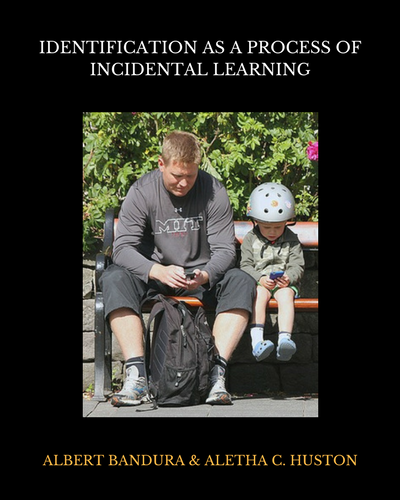


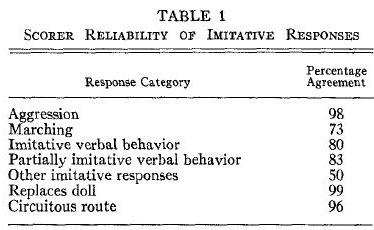
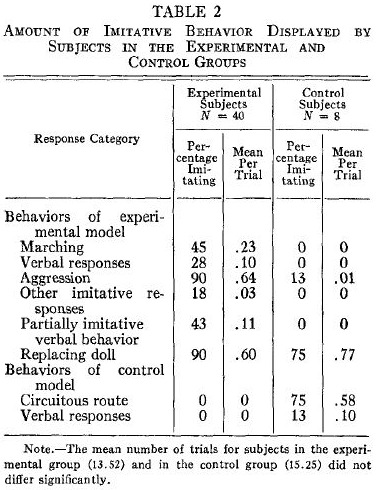
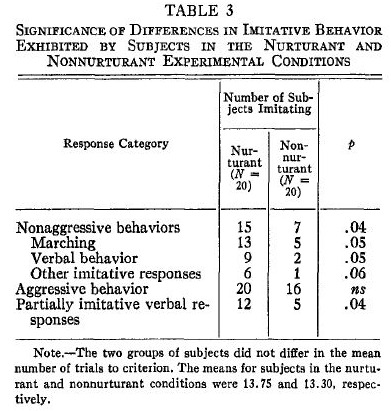
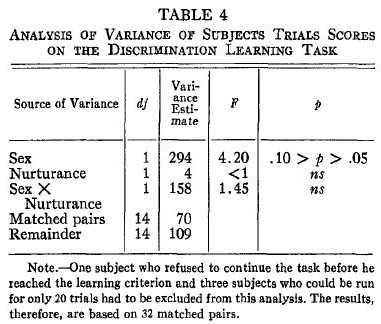



New! Comments
Have your say about what you just read! Leave me a comment in the box below.